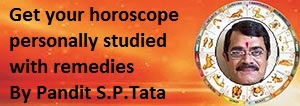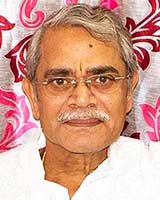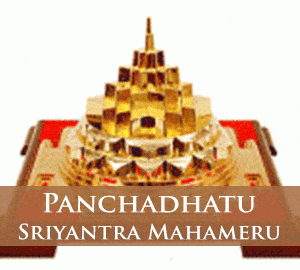In the first place, there are two main lines of Yoga, namely, Dhyana or Bhavana-Yoga and Kundalini Yoga; and there is a marked difference between the two. The first class of Yoga is that in which ecstasy (Samadhi) is obtained by intellective processes (Kriya-Jnana) of meditation and the like, with the aid, it may be, of auxiliary processes of Mantra or Hatha Yoga (other than the rousing of Kundalini) and by detachment from the world; the second stands apart as that portion of Hatha Yoga in which, though intellective processes are not neglected, the creative and sustaining Sakti of the whole body is actually and truly united with the Lord Consciousness. The Yogin makes Her introduce him to Her Lord, and enjoys the bliss of union through her. Though it is he who arouses Her, it is She who gives knowledge or Jnana, for She is Herself that. The Dhyana Yogin gains what acquaintance with the Supreme state his own meditative powers can give him and knows not the enjoyment of union with Siva in and through the fundamental Body-power. The two forms of Yoga differ both as to method and result. The Hatha Yogin regards his Yoga and its fruit as the highest; the Jnana Yogin may think similarly of his own. Kundalini is so renowned that many seek to know her. Having studied the theory of this Yoga, one may ask: “Can one get on without it?” The answer is: “It depends upon what you are looking for”.
If you want to rouse Kundalini Sakti, to enjoy the bliss of union of Siva and Sakti through Her and to gain the accompanying powers (Siddhis), it is obvious that this end can be achieved only by the Kundalini Yoga. In that case, there are some risks incurred. But if Liberation is sought without desire for union through Kundalini, then, such Yoga is not necessary; for, Liberation may be obtained by Pure Jnana Yoga through detachment, the exercise and then the stilling of the mind, without any rousing of the central Bodily-power at all. Instead of setting out in and from the world to unite with Siva, the Jnana Yogin, to attain this result, detaches himself from the world. The one is the path of enjoyment and the other of asceticism. Samadhi may also be obtained on the path of devotion (Bhakti) as on that of knowledge. Indeed, the highest devotion (Para Bhakti) is not different from Knowledge. Both are Realisation. But, whilst Liberation (Mukti) is attainable by either method, there are other marked differences between the two. A Dhyana Yogin should not neglect his body, knowing that as he is both mind and matter, each reacts, the one upon the other. Neglect or mere mortification of the body is more apt to produce disordered imagination than a true spiritual experience. He is not concerned, however, with the body in the sense that the Hatha Yogin is. It is possible to be a successful Dhyana Yogin and yet to be weak in body and health, sick and short-lived. His body, and not he himself, determines when he shall die. He cannot die at will. When he is in Samadhi, Kundalini Sakti is still sleeping in the Muladhara, and none of the physical symptoms and psychical bliss or powers (Siddhis) described as accompanying Her rousing are observed in his case. The ecstasy which he calls “Liberation while yet living” (Jivanmukti) is not a state like that of real Liberation. He may be still subject to a suffering body from which he escapes only at death, when if at all, he is liberated. His ecstasy is in the nature of a meditation which passes into the Void (Bhavana-samadhi) effected through negation of all thought-form (Chitta-Vritti) and detachment from the world—a comparatively negative process in which the positive act of raising the Central Power of the body takes no part. By his effort, the mind which is a product of Kundalini as Prakriti Sakti, together with its worldly desires, is stilled so that the veil produced by mental functioning is removed from Consciousness. In Laya Yoga, Kundalini Herself, when roused by the Yogin (for such rousing is his act and part), achieves for him this illumination.
But why, it may be asked, should one trouble over the body and its Central power, the more particularly as there are unusual risks and difficulties involved? The answer has been already given. There is completeness and certainty of Realisation through the agency of the Power which is Knowledge itself (Jnanarupa Sakti), an intermediate acquisition of powers (Siddhis), and intermediate and final enjoyment.
If the Ultimate Reality is the One which exists in two aspects of quiescent enjoyment of the Self, and of liberation from all form and active enjoyment of objects, that is, as pure spirit and spirit in matter, then a complete union with Reality demands such unity in both of its aspects. It must be known both here (Iha) and there (Amutra). When rightly apprehended and practised, there is truth in the doctrine which teaches that man should make the best of both worlds. There is no real incompatibility between the two, provided action is taken in conformity with the universal law of manifestation. It is held to be false teaching that happiness hereafter can only be had by absence of enjoyment now, or in deliberately sought for suffering and mortification. It is the one Siva who is the Supreme Blissful Experience and who appears in the form of man with a life of mingled pleasure and pain. Both happiness here and the bliss of Liberation here and hereafter may be attained, if the identity of these Sivas be realised in every human act. This will be achieved by making every human function, without exception, a religious act of sacrifice and worship (Yajna). In the ancient Vaidik ritual, enjoyment by way of food and drink was preceded and accompanied by ceremonial sacrifice and ritual. Such enjoyment was the fruit of the sacrifice and the gift of the Devas. At a higher stage in the life of a Sadhaka, it is offered to the One from whom all gifts come and of whom the Devatas are inferior limited forms. But this offering also involves a dualism from which the highest Monistic (Advaita) Sadhana is free. Here the individual life and the world life are known as one. And the Sadhaka, when eating or drinking or fulfilling any other of the natural functions of the body, does so, saying and feeling “Sivoham”. It is not merely the separate individual who thus acts and enjoys. It is Siva who does so in and through him.
Such a one recognises, as has been said, that his life and the play of all its activities are not a thing apart, to be held and pursued egotistically for its and his own separate sake, as though enjoyment was something to be filched from life by his own unaided strength and with a sense of separatedness; but his life and all its activities are conceived as part of the Divine action in Nature (Shakti) manifesting and operating in the form of man. He realises in the pulsating beat of his heart the rhythm which throbs through and is the song of the Universal Life. To neglect or to deny the needs of the body, to think of it as something not divine, is to neglect and deny the greater life of which it is a part, and to falsify the great doctrine of the unity of all and of the ultimate identity of Matter and Spirit. Governed by such a concept, even the lowliest physical needs take on a cosmic significance. The body is Shakti; its needs are Shakti’s needs. When man enjoys, it is Shakti who enjoys through him. In all he sees and does, it is the Mother who looks and acts, His eyes and hands are Hers. The whole body and all its functions are Her manifestations. To fully realise Her as such is to perfect this particular manifestation of Hers which is himself. Man when seeking to be the master of himself, seeks so on all the planes physical, mental and spiritual nor can they be severed, for they are all related, being but differing aspects of the one all-pervading Consciousness. Who, it may be asked, is the more divine; he who neglects and spurns the body or mind that he may attain some fancied spiritual superiority, or he who rightly cherishes both as forms of the one Spirit which they clothe? Realisation is more speedily and truly attained by discerning Spirit in and as all being and its activities, then by fleeing from and casting these aside as being either unspiritual or illusory and impediments in the path. If not rightly conceived, they may be impediments and the cause of fall; otherwise they become instruments of attainment; and what others are there to hand? And so, when acts are done in the fight feeling and frame of mind (Bhava), those acts give enjoyment; and the repeated and prolonged Bhava produces at length that divine experience (Tattva-Jnana) which is Liberation. When the Mother is seen in all things, She is at length realised as She who is beyond them all.
These general principles have their more frequent application in the life of the world before entrance on the path of Yoga proper. The Yoga here described is, however, also an application of these same principles, in so far as it is claimed that thereby both Bhukti and Mukti (enjoyment and liberation) are attained.











